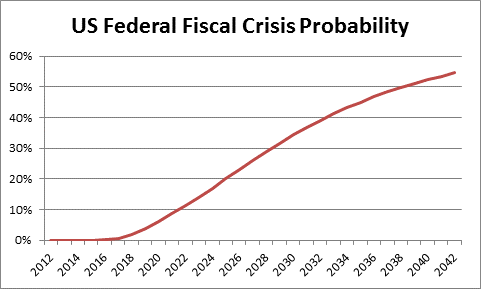The Public Sector Credit Framework (PSCF) is an open source tool for estimating the default risk of and assigning ratings to government debt. The PSCF installation package was released on May 2, 2012.[1]“Public Sector Credit Framework”. Retrieved 2012-10-25. At the same time, source code was published on GitHub.[2]“github”. GitHub Inc. Retrieved 2012-07-25.[3]Wikipedia – Public Sector Credit Framework. Retrieved 2013-09-21.

Criteria
The PSCF is intended to be as flexible as possible, but the approach requires the user to embrace two core assumptions:
- It is possible to build a multi‐year budget simulation that produces a range of annual fiscal outcomes in which a government’s actual “results” will fall. This approach needs to be distinguished from multi‐year budget forecasts offered by government agencies such as the US Congressional Budget Office. The CBO’s point estimates rely on specific inflation, interest rate and growth forecasts. A simulation approach, however, allows the user to specify a wide variety of macroeconomic scenarios, leveraging the framework’s random number generation capabilities.
- A default point can be specified in the form of a fiscal ratio – such as the ratio of debt to GDP or the ratio of interest expense to revenues. Different ratios and different default thresholds can be applied to different issuers. For users who do not believe certain sovereigns can default (perhaps because of their ability to monetize debt), the default threshold can be relabeled as a fiscal crisis threshold.
The choices of default ratio, default threshold and simulation approach are all left to the user’s discretion.
PSCF’s simulation approach enables the analyst to push beyond various government accounting dilemmas. For example, there has been significant debate over the appropriate discount rate to apply when calculating unfunded pension liabilities. In PSCF, such discounting is unnecessary. Future pension fund asset levels can be simulated based on a range and distribution of possible returns. In certain simulation trials, pension fund assets may remain available to be contributed to retiree benefits, while in other trials the fund may be exhausted, requiring a shift to a “pay as you go” system.[4]Public Sector Credit Framework, An Open Source Tool for Rating Sovereign and Sub-Sovereign Bond Issuers, 2012
Appropriate default points can be determined through a combination of research and theory.
Calculations
Download: Public Sector Credit Framework (GitHub)
Lists
References[+]
| ↑1 | “Public Sector Credit Framework”. Retrieved 2012-10-25. |
|---|---|
| ↑2 | “github”. GitHub Inc. Retrieved 2012-07-25. |
| ↑3 | Wikipedia – Public Sector Credit Framework. Retrieved 2013-09-21. |
| ↑4 | Public Sector Credit Framework, An Open Source Tool for Rating Sovereign and Sub-Sovereign Bond Issuers, 2012 |